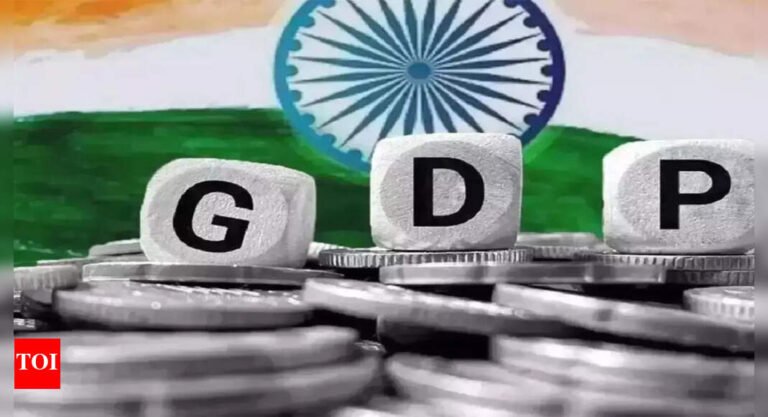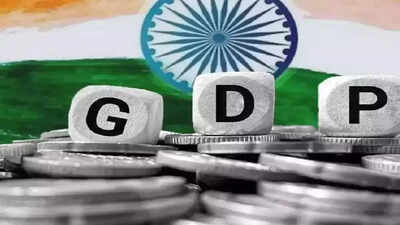NEW DELHI: India’s GDP growth for the January-March quarter of FY25 may have surprised on the upside, but a new report warns that the robust headline figure masks an economy still struggling under the surface.Systematix Research, in a sharp critique, said the 4QFY25 growth “continues to be dependent on public spending-led construction,” while key indicators point to deeper structural weaknesses. “The upside surprise in Indian GDP growth makes a robust headline, but it masks underlying weaknesses,” the report stated.Cracks behind the headline numbersAmong the red flags, the report noted that money supply grew much slower than nominal GDP, raising concerns about the credibility of the growth data. Additionally, personal consumption expenditure grew faster than the actual sales volume of consumer goods, indicating a disconnect between reported demand and real consumption.While government capital spending surged, private investment likely contracted. “Public spending is not crowding in private investment,” the report noted, suggesting that the government’s infrastructure push is failing to stimulate broader economic momentum.Demand still fragileHousehold income remains under stress, retail lending growth has slowed, and reduced government subsidies have added to the pressure. Net indirect taxes rose to their highest level since June 2018, which the report said has further squeezed demand.Meanwhile, even as the current account deficit narrowed, the total trade contraction signals weakening domestic and global demand. “There is a growing disconnect between reported GDP figures and the on-ground economic situation,” the report said.Outlook hinges on rural consumptionSystematix points to rural demand revival and agricultural strength as key to future growth. But with private capex still elusive and global uncertainties mounting, a meaningful recovery may remain sluggish.While the Reserve Bank of India may step in with easing measures if inflation stays low, the report warns that low inflation itself reflects weak incomes and demand, not price stability.Global headwinds aheadOn the international front, the report cautioned that panic buying in global trade, in anticipation of possible tariffs under a second Trump administration, could push the US towards stagflation, a risk that would ripple through emerging markets like India. With India’s trade-to-GDP ratio already falling, the country may find itself exposed to external shocks without the cushion of strong export performance.“In the absence of a turnaround in productive employment,” the report concludes, “India’s growth story risks becoming increasingly imbalanced and fragile.”
Trending
- Who is Kesavan Ramachandran? RBI elevates internal veteran to executive director, to oversee prudential regulation
- India-US trade deal: Talks enter sixth day as Donald Trump’s tariff deadline looms; top things India is pushing for amidst hectic negotiations
- Infosys vs Cognizant fight gets uglier! Why are the two big IT firms battling it out in the US? Explained
- Layoff wave spreads across US: Starbucks, FedEx, Frito-Lay, Microsoft may axe jobs in July – here’s what’s going wrong
- Cryptocurrency market today: Bitcoin holds near $107k amid tariff caution, Altcoins see mixed moves
- US Fed policy outlook: Fed chair Jerome Powell says central bank must remain ‘non-political’ as Donald Trump pressure mounts, rate cut still not ruled out
- HDB Financial IPO listing: Stock set for market debut on July 2; check GMP and other details
- Total sown area this monsoon: Kharif sowing jumps 11.3% on strong monsoon; rice and pulses lead acreage surge
- Leadership shuffle: Tata Sons ropes in consumer veterans to Tata Digital board; balances earlier finance-centric line-up
- June GST collections 2025: Tax mop-up at Rs 1.85 lakh crore, up 6.2% on YoY



